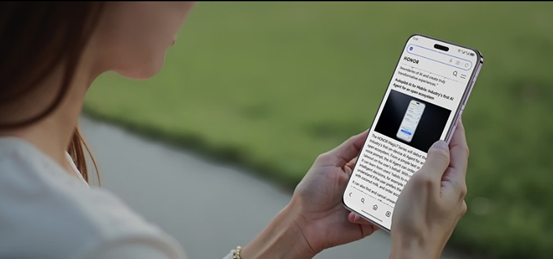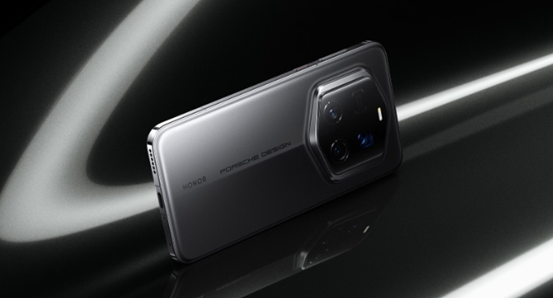Smartphones have become essential tools in our daily lives, handling everything from work to entertainment. With such heavy reliance, durability is no longer a luxury—it’s a necessity. A cracked screen from an accidental drop or water damage from a spilled drink can disrupt productivity and cost hundreds in repairs. Modern users demand devices that withstand daily wear and tear, whether they’re commuting, traveling, or simply juggling life’s unpredictable moments. In this article, we’ll break down the key features that make a phone truly durable, helping you choose a device that lasts.

Build Materials: The Foundation of Durability
The materials used in a smartphone’s construction determine its ability to resist damage. High-end models often feature aerospace-grade aluminum or stainless steel frames, which provide excellent structural rigidity while remaining lightweight. These metals absorb shock better than plastic, reducing the risk of bending or warping from impacts. For the back panel, many manufacturers now use reinforced glass with ceramic coatings, offering both premium aesthetics and added scratch resistance. Some even incorporate polycarbonate blends in budget models, which may not feel as premium but can be surprisingly resilient. The choice of materials also affects heat dissipation, preventing overheating during prolonged use. A well-built phone should feel solid in hand without unnecessary flex or creaking.
Display Protection: Your Screen's First Line of Defense
The display is the most vulnerable part of any smartphone, facing constant threats from drops, scratches, and pressure. Modern screens use chemically strengthened glass, such as Gorilla Glass or similar alternatives, which undergo ion-exchange processes to enhance surface compression. This makes them more resistant to cracks and scratches from keys or coins in your pocket. Some manufacturers apply oleophobic coatings to repel fingerprints and smudges, maintaining clarity over time. Another emerging innovation is the use of nano-crystal shields, which embed microscopic ceramic particles into the glass for added toughness. These advancements don’t just prevent cracks—they also reduce the likelihood of spiderweb fractures spreading from minor impacts. For extra security, consider phones with slightly raised bezels or built-in screen protectors that take the brunt of falls.

Water and Dust Resistance That Actually Works
Water damage is one of the leading causes of smartphone failures, but proper ingress protection can prevent disasters. Look for phones with at least an IP68 rating, meaning they can survive immersion in 1.5 meters of water for 30 minutes. Higher certifications like IP69 indicate resistance to high-pressure jets, making them ideal for outdoor enthusiasts. Dust resistance is equally important, as particles can clog ports and speakers over time, degrading performance. Sealed gaskets around buttons and ports, along with waterproof adhesive, keep internal components safe from moisture and debris. Some manufacturers even include moisture detection alerts to warn users before charging a wet device. While no phone is completely invincible, proper water and dust resistance can save you from costly repairs or replacements.
Battery Longevity - The Overlooked Durability Factor
Why Battery Degradation Is Your Phone's Silent Killer
Batteries naturally lose capacity over time, but poor charging habits can accelerate this process. Lithium-ion cells degrade faster when constantly charged to 100% or drained to zero. Heat is another major enemy—exposing your phone to high temperatures while charging reduces its lifespan significantly. Many users don’t realize their phone’s performance throttles as the battery weakens, leading to slower app launches and unexpected shutdowns. Modern smartphones include software optimizations to slow degradation, such as adaptive charging that delays reaching full capacity until you wake up. Monitoring your battery health through settings can help you spot issues early. Replacing a worn-out battery often costs less than buying a new phone, but choosing a device with long-term durability minimizes this hassle.
Fast Charging vs. Battery Health - Finding the Balance
Fast charging is convenient, but it generates heat that stresses the battery over time. Some manufacturers now use split-cell designs or advanced cooling systems to mitigate this, allowing quicker charging without excessive wear. Others offer adjustable charging speeds, letting users prioritize longevity when needed. Wireless charging, while convenient, often produces more heat than wired methods, further impacting battery health. If you frequently use fast charging, avoid covering your phone or placing it on soft surfaces that trap heat. The best approach is to charge at moderate speeds overnight or top up periodically throughout the day. Balancing convenience with care ensures your battery remains healthy for years.
Conclusion
Durability isn’t just about surviving accidents—it’s about preserving functionality over time. The HONOR Magic7 RSR Specs exemplifies this philosophy with its IP69 & IP68 water resistance, ensuring protection against both submersion and high-pressure water exposure. Its Anti-scratch NanoCrystal Shield adds another layer of defense, keeping the display pristine despite daily abuse. By prioritizing these features, you invest in a device that stays reliable through years of use. A durable phone saves money, reduces waste, and delivers peace of mind in an unpredictable world. Choose wisely, and your smartphone will be a trusted companion for the long haul.
Copyright © 2023 infomorespace.com. All rights reserved.